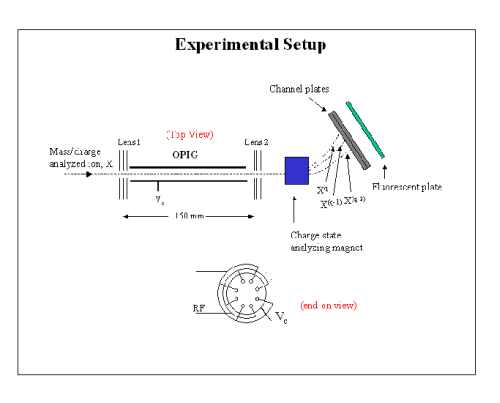Single and double charge exchange cross sections at very low energies
C. Verzani1, H. Tawara1, K. Okuno2,
T. Kaneyasu2, B. D. DePaola1
1) J.R. Macdonald Laboratory, Department of Physics, Kansas State University,
Manhattan, Kansas, 66506-2604 USA
2) Department of Physics, Tokyo Metropolitan University, Minami-Ohsawa 1-1,
Hachioji-shi, Tokyo 192-03, Japan
Charge transfer between ions and atoms has been studied extensively for high-energy
collisions ( > 1 keV), but there have been relatively few studies for lower energy
collisions1,2. It is important to study ion-atom collisions at low energies, not only
to provide data for theorists to help generate a more complete understanding of atomic
collisions physics, but also to gain accurate knowledge of the underlying processes in
astrophysical and fusion plasmas, which typically have interactions with kinetic energies
in the range of 0.1 to 100 eV/amu. Experimental cross section measurements taken at low
energies can assist theorists in developing a more complete model.
In this experiment, an octopole ion-beam guide (OPIG) technique is used in conjunction with
the Kansas State University (KSU) Cryogenic Electron Beam Ion Source (CRYEBIS), to facilitate
the study of these low energy collisions. An r-f field applied to the OPIG confines the ions
radial motion, but does not affect the motion along the beam axis. The OPIG is also floated on
a DC potential in order to decelerate the projectile ion to the desired collision velocity.
The r-f field serves to prevent the beam from blowing up, which reduces the beam intensity.
In a conventional collision cell without an OPIG it is then difficult to measure ions that have
a large scattering angle. However, an additional benefit of the OPIG is its ability to collect
product ions having a large angular spread. In a collision cell with an OPIG, the product ions
having a positive axial velocity component in the laboratory frame are guided along the beam axis
in the downstream direction. After exiting the OPIG these ions can then be measured.
The Siq+ + He collision system has been studied at energies as 100 eV, 500 eV, and 1200 eV
for q=3, 4 and 5, respectively. These results will be presented. The low energy limitation
of these results was due to our ion detection system. This has now been improved and we anticipate
measurements down to a few eV/amu. Progress on this experiment will be reported.
Figures:

Figure 1:
Experimental setup schematic: An Octapole Ion Beam Guide, OPIG, is used to decelerate the ion
beam while simultaneously confining the ion beam in the transverse direction. Single and double
electron captured ions are separated from the primary beam by a charge state analyzing magnet,
and detected on the beam viewer.
References:
1) K. Okuno, et. al., Physica Scripta, Vol. T71, 140-146, (1997)
2) G. Lubinski, et. al., Phys. Rev. A., Vol. 86, No. 4, 616-619 (2001)
This work was supported by the
Chemical Sciences, Geosciences and Biosciences Division,
Office of Basic Energy Sciences,
Office of Science,
U.S. Department of Energy.
Submitted to ICPEAC 2001, July 2001 in Santa Fe, NM.
This abstract is also available in
Postscript or
Adobe Acrobat formats.
